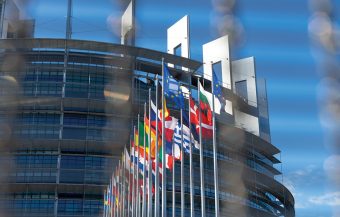The energy transition is a global process involving almost every country in the world. The goal is to build a sustainable and secure energy system that can meet the growing demand for energy while reducing the negative impact on the environment. Although each country tailors its approach according to its own capabilities, Europe has set an even more comprehensive and ambitious goal—to become the first climate-neutral continent in the world. Clean energy is the central thread in achieving this transition, as energy accounts for about 75 percent of total greenhouse gas emissions in the European Union.
The transformation of the energy sector has led to the development of important policies that regulate various areas, from transitioning from fossil fuels to low-carbon and renewable energy, improving energy efficiency in industry and buildings, product energy labeling, electromobility, to the introduction of smart meters, integration, and digitalization of the energy market.
The European Green Deal, the Fit for 55 package, and the REPowerEU Plan are among the most important European Union policies in the field of energy and climate transition.
The European Green Deal
In 2019, the European Commission adopted a long-term vision called the European Green Deal, which aimed at achieving climate neutrality by 2050. It laid the foundation for all subsequent policies and legislative initiatives related to sustainable energy development and the reduction of greenhouse gas emissions. As part of the European Green Deal, the first European Climate Law was adopted in 2021, setting the goal for the European economy and society to become climate-neutral by 2050, along with an intermediate goal of reducing net greenhouse gas emissions by at least 55 percent by 2030 compared to 1990 levels. The goal of net-zero greenhouse gas emissions by 2050 became legally binding with this law. It stipulates that EU institutions and member states have the duty to take the necessary measures at both the Union and national levels to meet this goal.

It is particularly emphasized that it is necessary to consider the importance of promoting fairness and solidarity among member states. The European Climate Law also includes measures for monitoring progress and adjusting actions accordingly based on certain existing systems. For example, the Regulation on the Governance of the Energy Union is cited. It is intended to help the European Union achieve its climate and energy goals by setting common rules for planning, reporting, and monitoring. It aims to ensure that planning and reporting are aligned with the goals and cycles of ambition defined in the Paris Agreement. Another example is the so-called NECP, which represents the ten-year national energy and climate plans of EU countries. Within these plans, member states outline how they will address decarbonization, energy efficiency, energy security, the internal energy market, research, innovation, and competitiveness issues. In February 2024, the European Commission recommended that an additional intermediate goal of a 90 percent reduction in emissions by 2040 be included in the European Climate Law. However, the legislative proposal for this recommendation is still pending.
It should be noted that the European Green Deal places people at the heart of the transition, striving to make the transition fair, particularly paying attention to those vulnerable in the clean transition and most affected by the consequences of climate change. This includes significant investments through funds and other financial instruments. For example, the Just Transition Fund supports workers and regions in developing new skills and advancing the green economy. The Social Climate Fund is intended to support vulnerable groups in investments in energy efficiency or energy renovation of buildings, clean heating, renewable energy integration, and more.
IN FOCUS:
- Challenges of Competitive Energy Production in the Global Market
- INECP – Serbia on the Path to Sustainability
- Where Have the Falcons Gone?
The Fit for 55 Package
While the European Green Deal is the European Union’s long-term vision to achieve climate neutrality by 2050, the Fit for 55 Package represents concrete legislative proposals to make that vision a reality. This package was introduced in 2021, and its name refers to its main goal: reducing net greenhouse gas emissions by 55 percent by 2030, compared to 1990 levels. It includes revisions to several significant directives related to achieving the European Union’s climate goals. These directives include the Renewable Energy Directive (RED), the Energy Efficiency Directive (EED), the Energy Performance of Buildings Directive (EPBD), the Energy Taxation Directive, and the Gas and Hydrogen Package. The revisions aim to align the existing legal frameworks with the goals set by the Fit for 55 Package.
The Fit for 55 Package encompasses numerous areas that need improvement. This package makes the EU Emissions Trading System (EU ETS) more ambitious in several ways, one of which is its expansion to include emissions from maritime transport.
Numerous additional targets are established to achieve the main goal set by the Fit for 55 Package. The first target mentioned is the transition from fossil fuels to low-carbon and renewable energy sources. The next goal is to reform the EU Emissions Trading System, which involves introducing stricter rules and expanding them to additional sectors. These goals also include reducing emissions in transport, buildings, agriculture, and waste, as well as in land use and forestry sectors. Speaking of specific emissions, particular attention is directed towards reducing methane emissions. Other goals include establishing funds to provide financial support during the transition to a green economy.
Prepared by: Katarina Vuinac
Read the whole story in the new issue the Energy portal Magazine ENERGY TRANSITION
